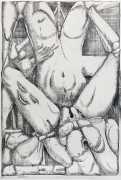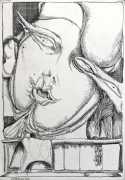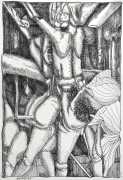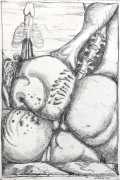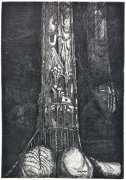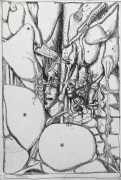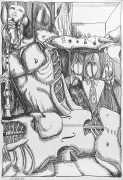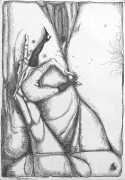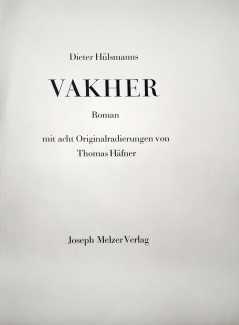 The eight Thomas Häfner etchings for Dieter Hülsmanns’ novel Vakher show Häfner at his most erotic, and in a medium which demonstrates his ability to combine complex imagery with a more direct and simplified exploration of some of his more intimate imaginings.
The eight Thomas Häfner etchings for Dieter Hülsmanns’ novel Vakher show Häfner at his most erotic, and in a medium which demonstrates his ability to combine complex imagery with a more direct and simplified exploration of some of his more intimate imaginings.
Vakher is a short semi-autobiographical novella, strongly influenced by French surrealism, in particular by the erotomania and pathological radicalism of the author Antonin Artaud, some of whose work was translated into German by Hülsmanns.
Dieter Hülsmanns (1940–81), like Häfner, lived in Düsseldorf and came from Jewish roots. After spending time in France and Belgium, Hülsmanns became a member of the features editorial team of the Allgemeine Jüdische Wochenzeitung (Universal Jewish Weekly). From 1966 until his death he was co-owner and director of the small publishing house Eremitenpresse, and it was Eremitenpresse that first published an unillustrated edition of Vakher in 1966.
The Häfner-illustrated edition followed a year later, published by Joseph Melzer Verlag, in a limited, numbered and signed edition of 300 copies. Melzer Verlag, founded by Joseph Melzer in 1958, initially specialised in Judaica, but in 1967 turned to erotic literature for financial reasons. Its most successful enterprise by far was as publisher of the first German-language edition of The Story of O, but it was not enough to save the firm from bankruptcy in 1971.


